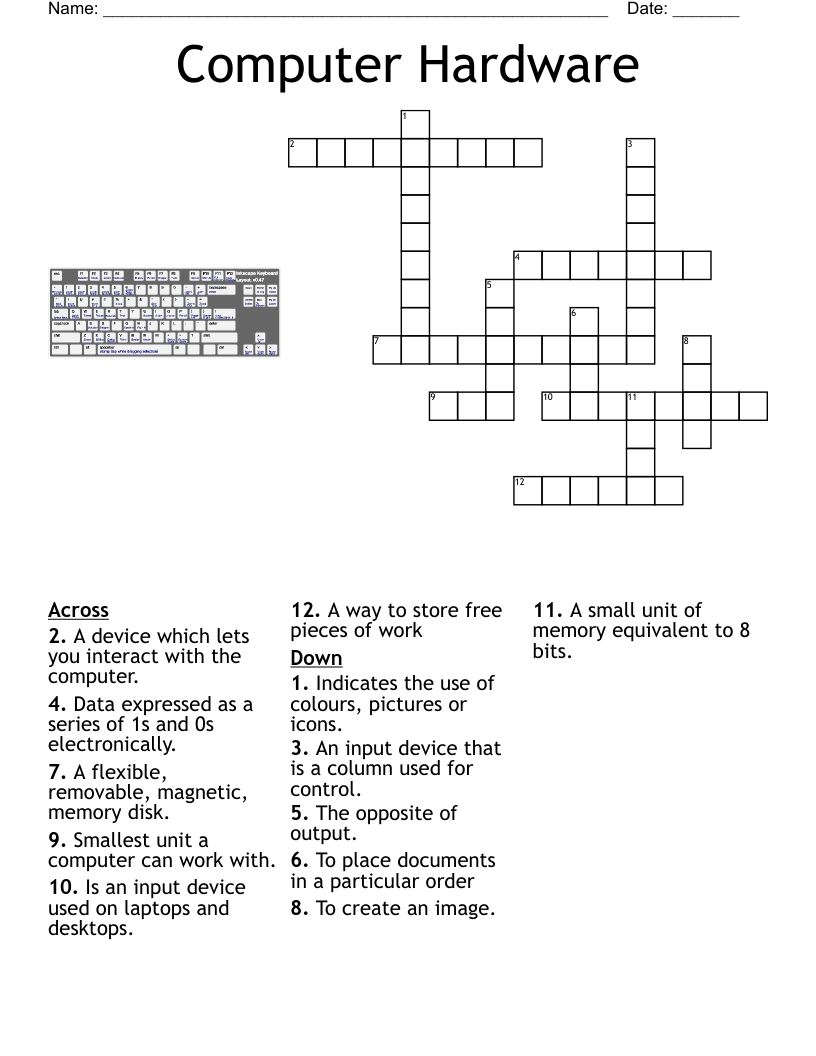A Pixelated Puzzle: Unraveling the History of Early PC graphics (A Crossword Companion)
This article explores the fascinating evolution of early personal computer graphics, from the monochrome displays of the late 1970s to the rise of color and the dawn of 3D. It’s designed to be enjoyed alongside a crossword puzzle (available separately) that tests your knowledge of the key technologies, companies, and figures that shaped this pivotal era.
The Dawn of the Dot: Monochrome Beginnings
The earliest personal computers, like the Altair 8800, relied on simple text-based interfaces. Graphics, as we understand them today, were virtually non-existent. These machines communicated with users through characters displayed on a screen, often using a limited set of ASCII characters. The focus was on functionality and processing power, not visual flair. However, even within these constraints, the seeds of future graphical innovation were being sown. Early adopters began exploring ways to manipulate characters to create rudimentary shapes and patterns, laying the groundwork for more sophisticated graphics.

Enter the Apple: A Colorful Revolution
The arrival of the Apple II in 1977 marked a significant turning point. While still limited by today’s standards, its ability to display color graphics was revolutionary. The Apple II’s graphics mode offered a resolution of 280×192 pixels, a substantial improvement over the monochrome displays that dominated the market. This allowed for the creation of simple games and graphical applications, opening up new possibilities for user interaction. The Apple II’s success spurred other manufacturers to follow suit, recognizing the growing importance of graphics in the burgeoning personal computer market.
IBM’s Entry: Setting the Standard (MDA, CGA, and Beyond)
IBM’s entry into the personal computer market in 1981 with the IBM PC was a watershed moment. The initial IBM PC came equipped with the Monochrome Display Adapter (MDA), which, as the name suggests, offered only monochrome text. However, it was quickly followed by the Color Graphics Adapter (CGA), which brought color graphics to the IBM PC platform. The CGA, while limited to a resolution of 320×200 pixels and only four colors, became a de facto standard. Its limitations, such as the “color bleed” effect, were often overlooked in the excitement of having color graphics on a PC.

The Rise of EGA and VGA: Sharper Images and More Colors
The limitations of CGA quickly became apparent, and users demanded higher resolutions and more colors. This led to the development of the Enhanced Graphics Adapter (EGA) in 1984, which offered improved resolution and a wider color palette. However, EGA was still relatively expensive, and it wasn’t until the introduction of the Video Graphics Array (VGA) in 1987 that a truly significant leap forward occurred. VGA offered a resolution of 640×480 pixels and a palette of 256 colors, ushering in a new era of graphical fidelity. VGA became the new standard, and it remained dominant for many years.
Beyond the Basics: The Advent of 3D Graphics
While 2D graphics were evolving rapidly, the seeds of 3D graphics were also being sown. Early attempts at 3D graphics were often computationally intensive and limited in their realism. However, advancements in hardware and software gradually made 3D graphics more accessible. Early 3D graphics cards, like the Hercules Graphics Adapter, focused on improving text mode performance, but they also laid some groundwork for future graphics acceleration. The development of specialized graphics processors (GPUs) would eventually revolutionize 3D graphics, but that was still some time away.
The Sound of Pixels: Audio’s Role
Graphics didn’t exist in a vacuum. Sound played an increasingly important role in the overall user experience. Early PCs often relied on simple beeps and tones generated by the system speaker. However, dedicated sound cards, like the AdLib and Sound Blaster, emerged in the late 1980s, offering richer and more complex audio capabilities. The combination of improved graphics and sound created a more immersive and engaging computing experience.
The Software Side: From BASIC to GUIs
The evolution of graphics hardware was closely intertwined with the development of software. Early PCs were often programmed in BASIC, which provided limited support for graphics. As graphics hardware became more sophisticated, new programming languages and tools emerged to take advantage of these capabilities. The development of graphical user interfaces (GUIs), like Microsoft Windows, further transformed the way users interacted with computers. GUIs made computers more accessible to a wider audience by replacing text-based commands with intuitive graphical elements.
The Legacy of Early PC Graphics
The early days of PC graphics may seem primitive by today’s standards, but they laid the foundation for the sophisticated graphics systems we use today. The innovations of this era, from the introduction of color graphics to the development of 3D rendering techniques, shaped the way we interact with computers and consume digital media. The companies and individuals who pioneered these technologies deserve recognition for their contributions to the digital revolution.
A Crossword Challenge: Test Your Knowledge
Now that you’ve explored the history of early PC graphics, put your knowledge to the test with the accompanying crossword puzzle! The clues will challenge you to recall the key technologies, companies, and figures that shaped this exciting era. Good luck, and happy puzzling!
Further Exploration: Delving Deeper
This article provides a brief overview of the history of early PC graphics. If you’re interested in learning more, there are many resources available online and in print. You can explore the history of specific graphics cards, learn about the pioneers who developed these technologies, and delve into the technical details of early graphics programming. The world of early PC graphics is rich and fascinating, and there’s always more to discover.
The End… or is it?
The story of PC graphics is an ongoing saga. While this article focuses on the early years, the evolution of graphics technology continues to this day. From the rise of dedicated GPUs to the advent of virtual reality, the world of graphics is constantly changing. The foundations laid in the early days of PC graphics continue to influence the technologies that shape our digital world. So, the next time you marvel at the stunning graphics of a modern video game or the intricate details of a computer-generated image, remember the pioneers who made it all possible.
like early pc graphics crossword
